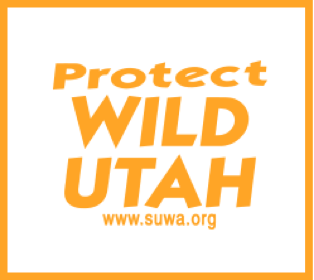|
For Immediate Release: March 15, 2007 Contact: BLM Ignores Request by Native Americans, Local Residents, Historic Preservationists, and Conservationists to Protect Arch Canyon's Cultural Resources
In response, the Navajo Utah Commission submitted a formal letter to the BLM further explaining the cultural significance of the canyon and urging the federal agency to prohibit motorized vehicle use in Arch Canyon:
Mark Maryboy, former Navajo Tribal Councilman and San Juan County Commissioner, concurs. “Preservation of these lands is important to our culture and spiritual values. We urge the BLM to recognize our cultural, traditional and ceremonial interests in this special place.” The Hopi Tribe has also requested that BLM institute an “immediate interim closure” of Arch Canyon and an adjacent ORV route due to the cultural resource concerns raised in the Arch Canyon Petition. Cultural and Natural Values Weigh in Favor of Protection from ORVs The National Trust for Historic Preservation notes that there is estimated to be over 100 undocumented sites in the canyon that ORV use puts at risk. “These sites could include human burials, ceremonial structures, residential and storage structures, and rock art panels. BLM must complete a comprehensive archaeological survey of the canyon to gather adequate information rather than making a decision blindly,” notes Barbara Pahl, Director, Mountain/Plains office of the National Trust for Historic Preservation. Arch Canyon’s winding stream supports three native fish species, including one sensitive fish species. Arch Canyon has recently become a target of intense ORV use. The machines traveling up this canyon cross the stream 60 times in the short eight and one-half mile trip from the mouth of the canyon to the U.S. Forest Service boundary where the canyon is closed to ORV use, totaling 120 stream crossings for each round trip. Not surprisingly, this intense use damages and pollutes the stream and harms the fish habitat. “Certainly concerns of Native Americans about the impacts of ORVs to their ancestral homeland outweigh any purported “recreational” need to allow ORVs to run up and down this canyon causing damage,” says the Southern Utah Wilderness Alliance’s Liz Thomas. Thomas adds “there are thousands of miles of ORV routes in southern Utah located in less sensitive areas where ORV use may be appropriate. But some special places should be protected.” Arch Canyon has been the site of previous, controversial ORV events. In 2004, Lynn Stevens, a San Juan County Commissioner, and Governor Huntsman’s Coordinator of the Public Lands Coordinating Office, defied the BLM and led the Jeep Jamboree ORV event up Arch Canyon, after BLM had denied the organizers’ permit application. “It appears that BLM is now bowing to political pressure,” says Veronica Egan, Great Old Broads for Wilderness. According to Vaughn Hadenfeldt, member of the local Canyon Country Heritage Association in Bluff, Utah, “BLM is not doing its job to manage ORV use on our public lands in southeastern Utah, and such use is out of control. BLM is rewarding rogue behavior by legitimizing illegally constructed routes through cultural sites. The Monticello BLM is effectively giving up lands to motorized use, rather than balancing ORV use with the need to preserve habitat, archaeological sites, and traditional use areas. There is no need to allow ORV events in Arch Canyon.” For background sources, see: www.suwa.org/archpetition
|
|
|
||

 Southern Utah Wilderness Alliance
Southern Utah Wilderness Alliance
Protecting Utah's Redrock Country

